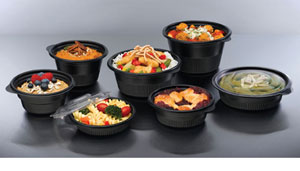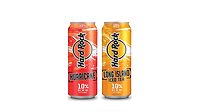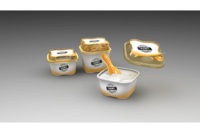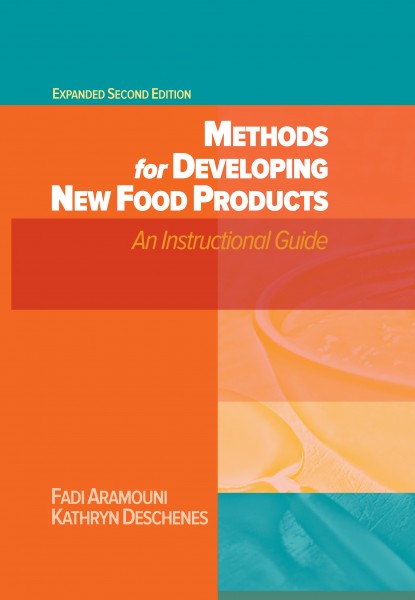
|
|
Microwave reheating is becoming an important feature in carryoutfood containers, particularly with deli-style meals sold in supermarkets. Source: D&W Fine Pack.
|
“In California and the Pacific Northwest, foam is being legislated out of cities and is being replaced with paper and polypropylene containers,” says Karen Williams-Roman, director of product management at Fountain Inn, SC-based D&W. But microwave heating is an issue with paper, and polypropylene comes at a premium over foam, she points out. To trim cost, the Cruiser Bowl line reduces resin content by sandwiching a layer of talc or calcium between two sheets of polypropylene. The denser minerals provide greater structural integrity, even at a thinner gauge.
“The downside of calcium or talc is that they are stone, and they tend to be rough on the molds when they get compounded,” Williams-Roman allows. The material lacks the clarity of polypropylene, as well. But for “homey foods like mashed potatoes and macaroni & cheese, the container is perfect,” she adds.
The line also includes an eight-ounce bowl with a tapered base that fits in a car’s cup holder. “We’re seeing a trend to smaller-sized packages,” she says, and bowls as small as five and six ounces are part of the line.
For more information:
Karen Williams-Roman, D&W Fine Pack, 864-409-4448,
kroman@dwfinepack.com





